Dyson Zone is the gadget of our times – whether we like it or not
An engineering feat I hope we'll never truly need.
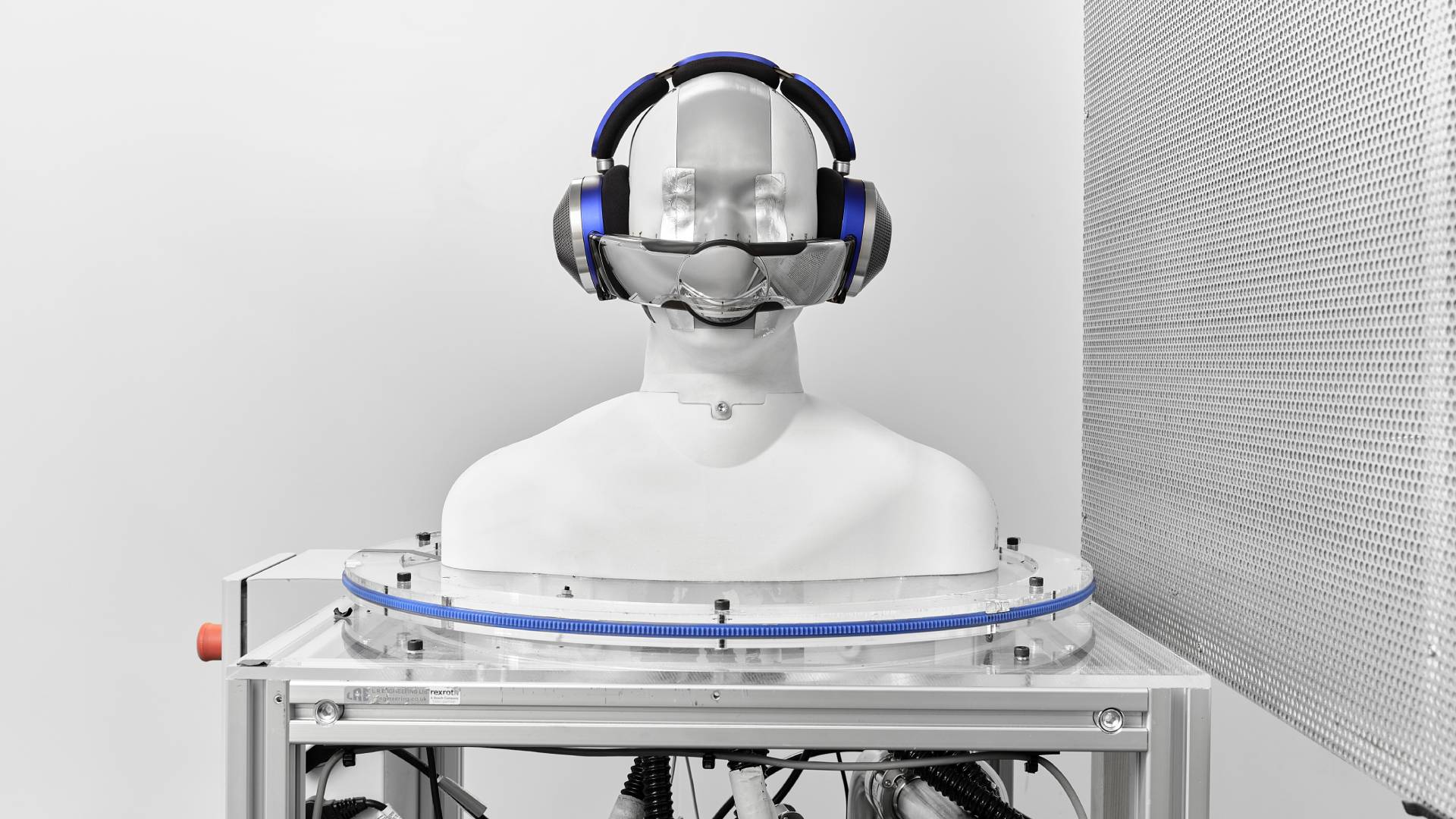
In the heart of Wiltshire, and on the edge of the Cotswolds, the area’s air-quality monitoring plants rarely register anything above a “Low (Index 2)” rating when it comes to tracking pollutants in the air.
So, nestled between rolling green hills, cow-packed fields, sandstone manor houses and picturesque cottages, it’s hard to believe that one of the most dystopian gadget ideas of our time could have been conceived in the quiet market town of Malmesbury, in the UK.
But the Dyson Zone, an all-new idea combining air purification with personal audio from the company best known for high-performance bagless vacuum cleaners, was conceived out of Dyson’s Malmesbury campus, and feels and looks like a prescient warning from a worryingly possible future – one in which humans have done such irreversible damage to the environment that we need portable breathing apparatus in order to survive.
Portable purification
I recently had the opportunity to test out the Dyson Zone at the company’s UK HQ, and was struck by the contrast between the idyllic surroundings and the seemingly portentous implications of the product’s design.
The existence of the Dyson Zone effectively says that the air around you, that you breathe everyday, is so full of harmful substances that you should be tempted to invest several hundred pounds or dollars in a gadget to clean it for you. [Note that Dyson has not yet revealed pricing for the Zone, but considering it’s miniaturised its household appliances’ purifying tech, and combined it with high-end headphones, don’t expect the Zone to come cheaply].
Despite the eye-brow raising reveal back in March, the Dyson Zone is a lot less intimidating in person. The exact specifications remain shrouded in mystery, but here’s what we do know so far.
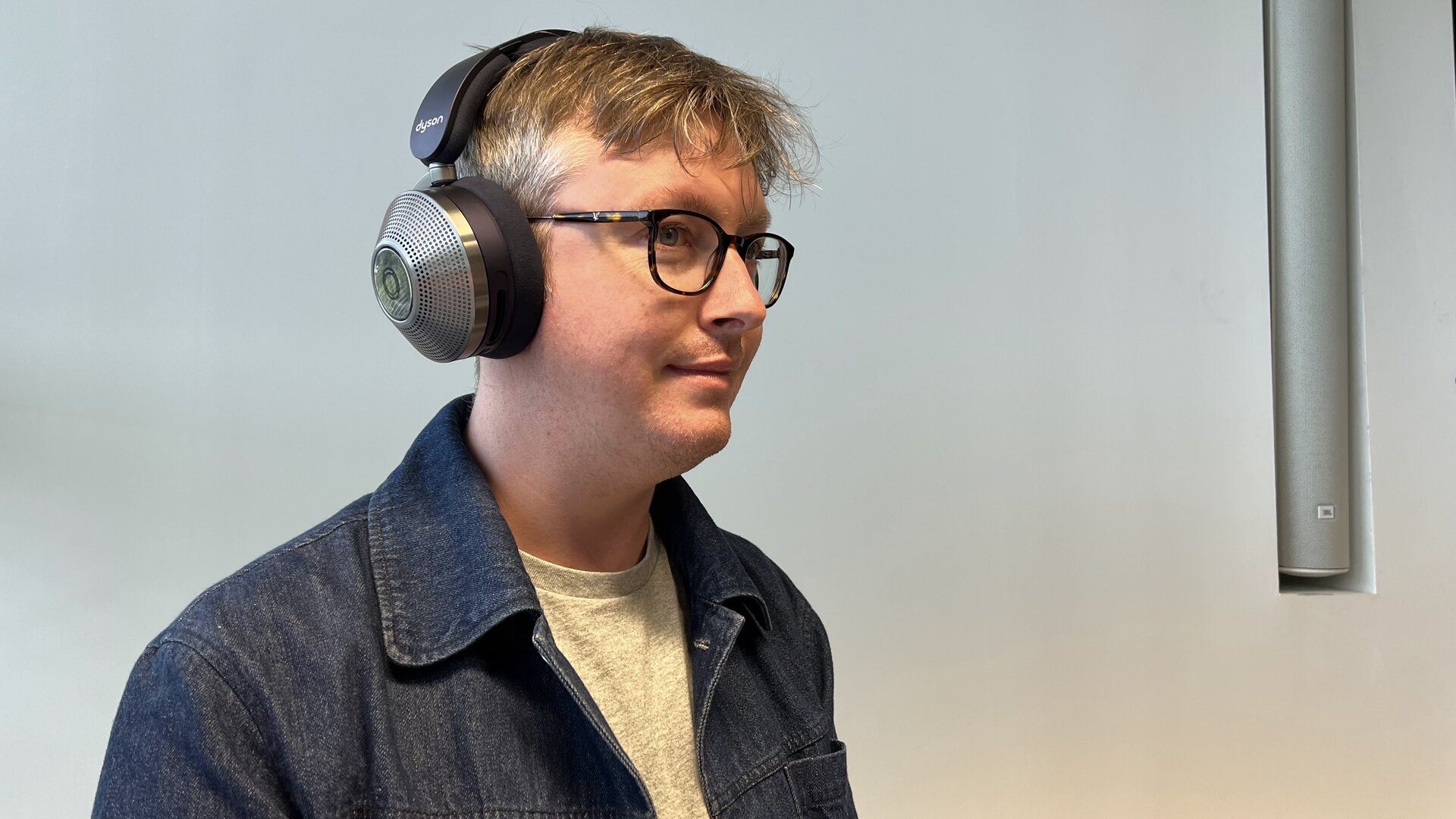
Looking first at the headphones component of the design, the Zone combines powerful noise-cancelling technology with a “high performing neodymium electroacoustic system.” Dyson states that it will boast the “largest” drivers in a headphone on the market, which should allow for a spacious and powerful sound, but didn’t share any specific details on what exactly will be employed.
Tuned to be “neutral” sounding so as to be as close as possible to an artist’s original studio intentions, it’s an impressive first roll of the dice for a company that’s never worked in audio before. Or, at least, in audio reproduction, as Dyson’s raison d'être is all about airflow, and many of its products are tuned to make the sounds of their suction components and motors as pleasant as possible.
Our brief time listening to the headphones wasn’t enough to get a full understanding of how the final product will sound, but what was presented was pleasing. A quick listen to Freya Ridings’ Lost Without You saw the delicate vocal and piano work delivered with clarity, even if it wasn’t much of a challenge for the system’s bass capabilities.
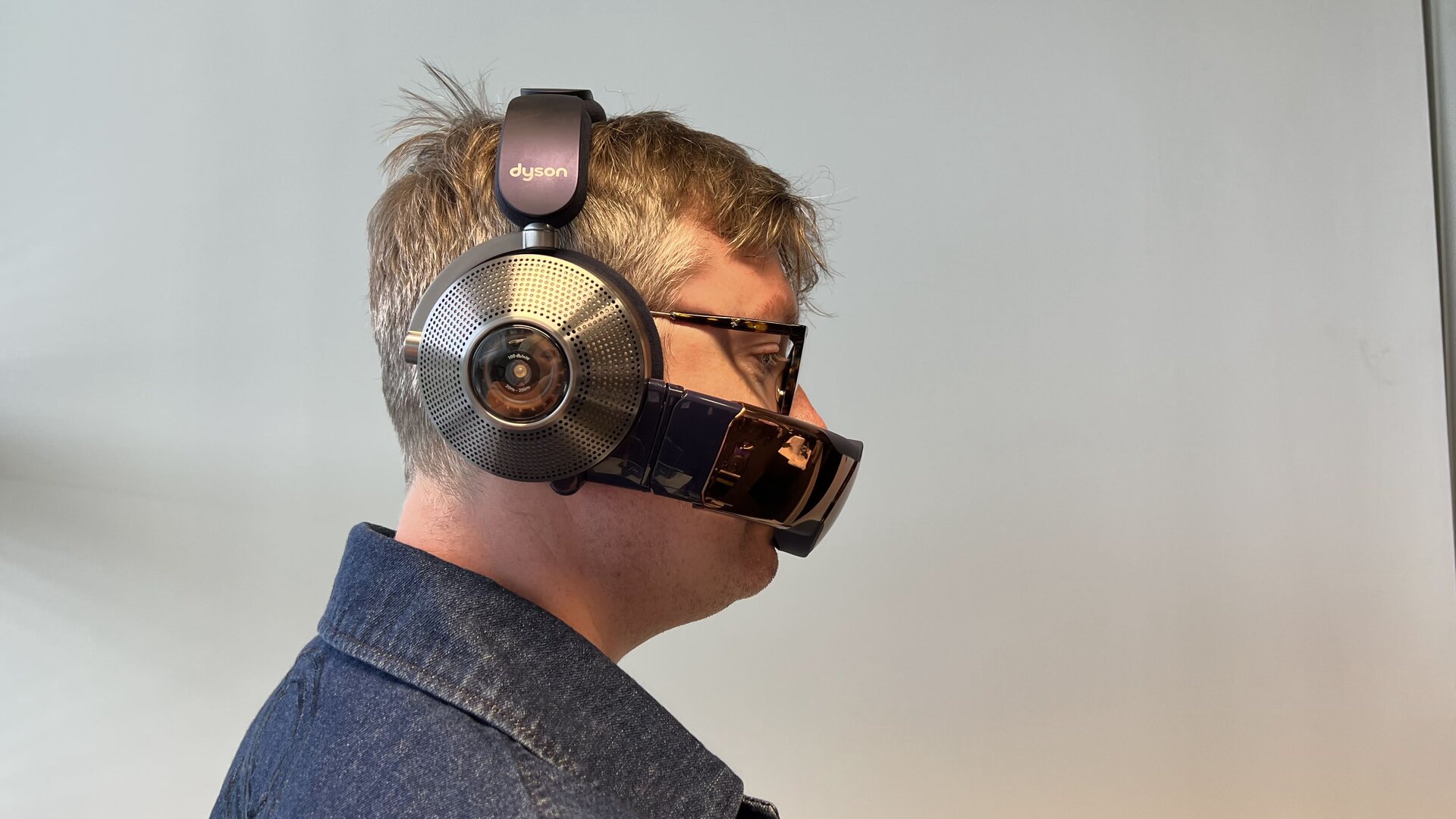
What the soft ballad did have to contend with though, was the whirring of the headset’s built-in air purification system and its associated filters and motors. More on these in a second, but their presence could barely be heard thanks to a very effective active noise cancelling system that will also offer a transparency mode for better hearing the world around you. As for volume control, that’s handled by a small, tactile joystick nub on the side, solidly housed in the ear cup, with the cup itself being touch sensitive for tap-activated playback controls, at least as responsive as rival high-end headphones of this ilk.
That the headphones are any good at all is a feat in itself considering what else is going on in the cans over your ears.
In each cup sits a motor pulling “dirty” air through a two-stage filtration system, cleaning it up and then projecting it out into a visor-style mouthpiece. It makes the headphones considerably larger than usual, and though admittedly heavy, look to remain comfortable through a sensible amount of padding and well-considered weight distribution.
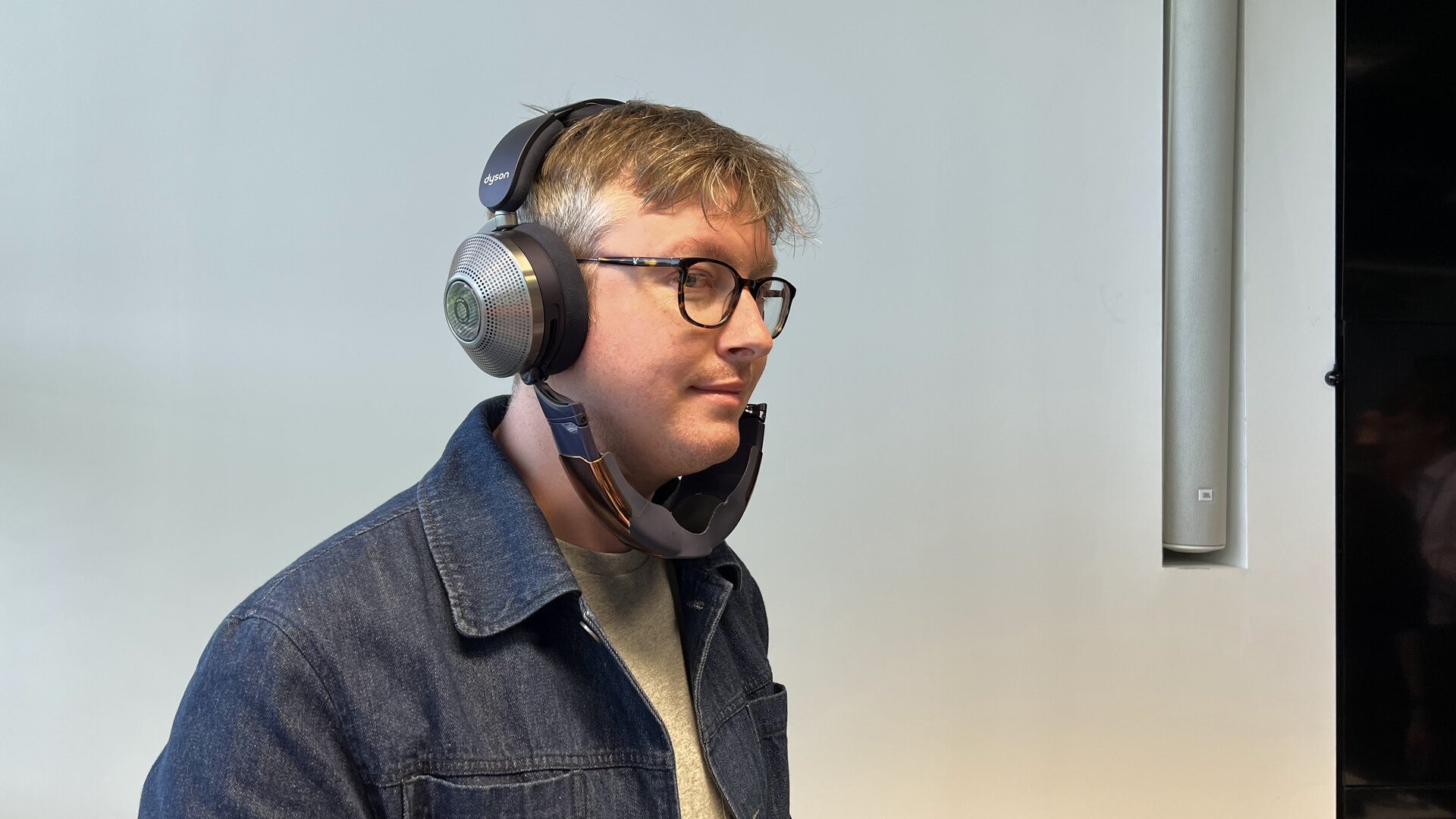
Dyson says the Zone can catch 99% of particle pollution (running the gamut from dust to pollen, and bacteria), and can filter common city gases like NO2, SO2, and O3. It’s faced criticism around the devices’ potential handling of COVID-19 (the device was conceived before the pandemic’s eruption, while Dyson has never claimed the Zone is a defence against the virus), but Dyson’s testing is “ongoing”, and the company is confident its filtration system is up to the task. At the very least, it’s sure it won’t amplify the virus’s potency for the wearer or those in the vicinity of the Zone, and an additional mouth-covering, more-traditional, face mask attachment will be included with every purchase.
Here’s where the sci-fi villain part comes in. The headphones magnetically connect to the mouthpiece, which then sits in front of the wearers’ mouth, rather than on it. Shredder, Bane, Daft Punk – it’s a look, for sure, but as it doesn’t actually touch your face, it’s surprisingly comfortable.
Remove it, and you’ve got a standard (if oversized) pair of headphones, while pivoting it into a chin-strap-like position pauses your music to allow you to have a chat. Snapping on and off with relative ease (the visor component weighs hardly anything even with its built in diffuser), Dyson seems to be acknowledging that you won’t want the mouthpiece on all day long, instead clipping it on when air quality feels particularly low – something that Dyson is looking to alert users to via a connection to an accompanying app.
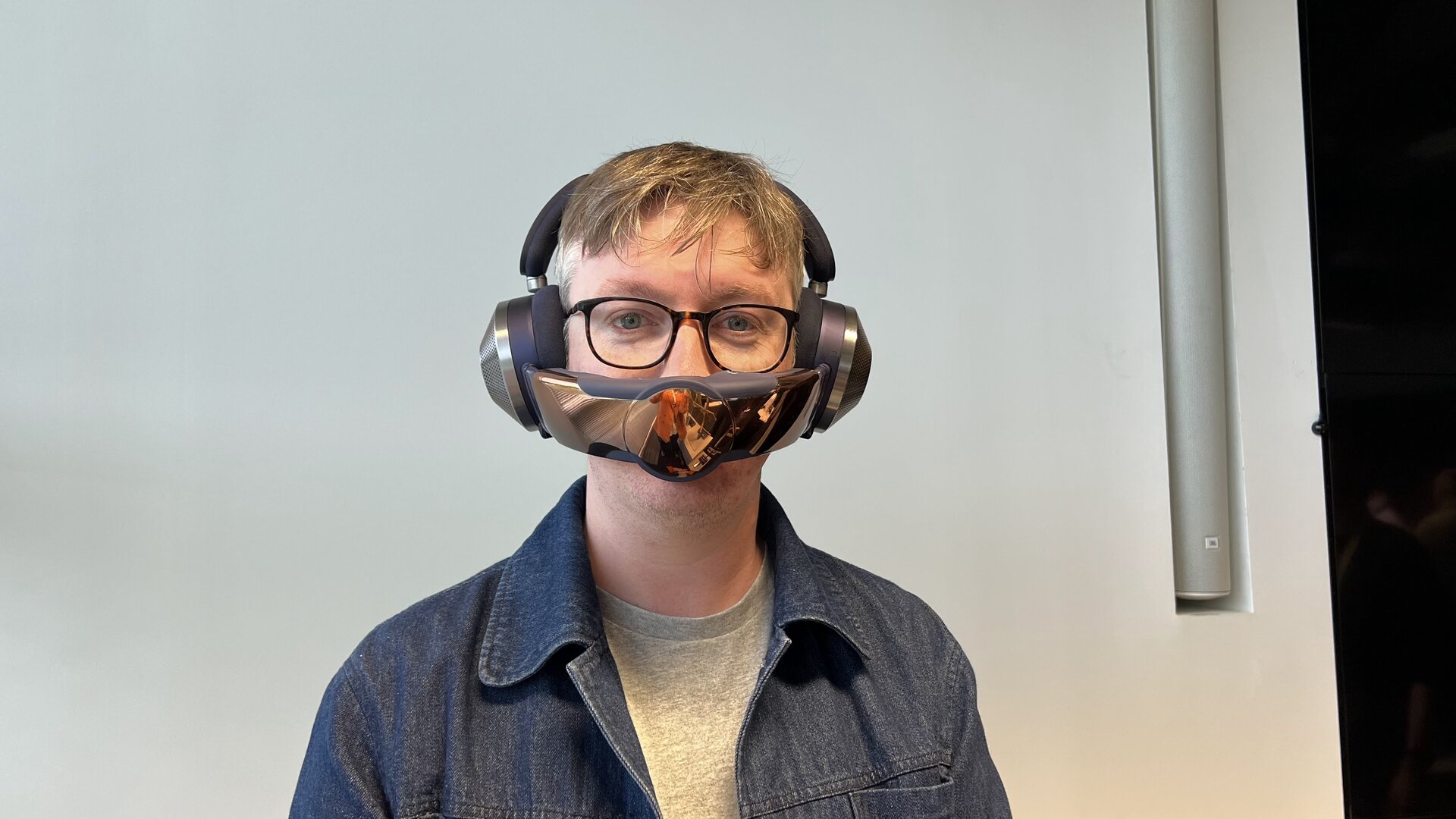
The air pumped to the front of the visor is pleasant too – a cool, gentle breeze, as if a tiny sparrow has been employed to whistle across your lips. Knowing that it’s been cleansed of the airborne rubbish you’d usually huff is reassuring too, though the Malmesbury air wasn’t exactly the best place to test its effectiveness – it’s hardly a Shenzhen factory town, or a smog-layered downtown LA.
A vision of a future you may not want to see
It’s hard to say if the Dyson Zone is prophetic or rash – an early look at an everyday item of the future, or a wild card response to the perceived problems of days to come. Maybe it’s a bit of both.
But what’s most difficult to reconcile is… who exactly is it for? As is symptomatic of all modern man-made ills, the people most at risk of concentrated exposure to pollutants are those with the least likelihood of being able to afford something like the Dyson Zone.
It’s hard to imagine many people in Hotan, China or Ghaziabad, India (the two most polluted cities in the world as of 2020), being able to cough up the cash to own the Zone. Pollution and poverty go hand-in-hand, and Dyson remains a premium brand – the ‘Apple’ of home appliances.
And yet, unless this is all a giant PR exercise (which Dyson assures us it is not – this is a very real coming-to-a-store-near-you-soon product), Dyson must believe there’s a profitable market out there for it to go through the assumed millions it will cost to design, engineer, produce and market the Zone.
Which leads me only to imagine an even more on-the-nose view of the future that’s been so often depicted in science fiction – a world of haves and have nots, where the wealthy few live long healthy lives thanks to admittedly well intentioned designs like the Zone, while those most at risk continue to endure and suffer without protection. If the Zone proves popular, perhaps the technology will trickle down, and be iterated on and become cheaper. But it’s hard to imagine it beyond the reach of the elite in the short term.
That’s the thing. For the Dyson Zone to succeed in commercial terms, the world must be well and truly… well, f*****. And as much as I admire the engineering expertise on show here, I really do hope that is not true.
Get daily insight, inspiration and deals in your inbox
Sign up for breaking news, reviews, opinion, top tech deals, and more.
Gerald is Editor-in-Chief of iMore.com. Previously he was the Executive Editor for TechRadar, taking care of the site's home cinema, gaming, smart home, entertainment and audio output. He loves gaming, but don't expect him to play with you unless your console is hooked up to a 4K HDR screen and a 7.1 surround system. Before TechRadar, Gerald was Editor of Gizmodo UK. He is also the author of 'Get Technology: Upgrade Your Future', published by Aurum Press.
